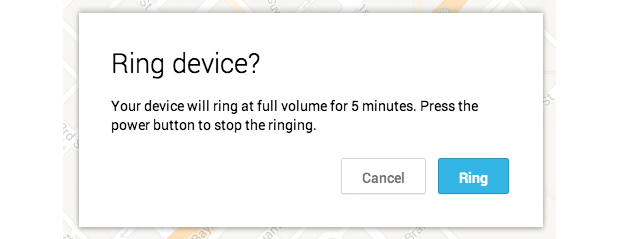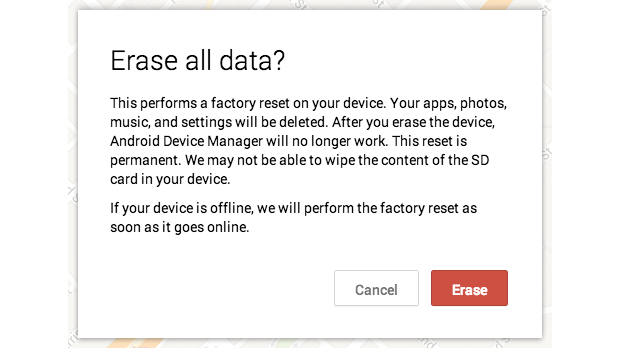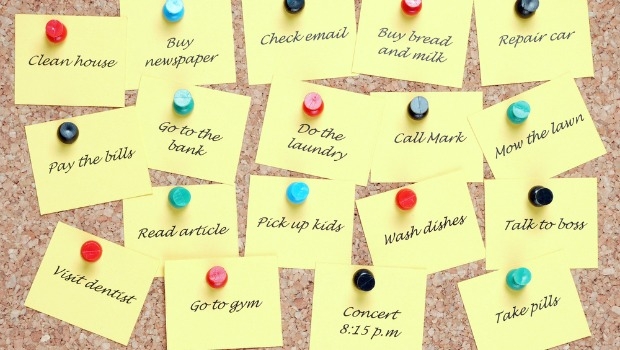culled from:wikihow.com
Method 1 of 3: Checking Nearby
-
1Call your phone. Use a friend's cell phone or a landline to dial your phone. If your phone is nearby, you'll hear it and can retrieve it. Alternatively, perhaps someone will answer it and can tell you where it is.
- If you can't get your hands on another phone, try calling from your computer using a program like Gmail or Skype.
- This method will likely not work if your phone is set to silent, or the battery is dead.
-
2Look around. If you think you've just misplaced it, do a quick search in nearby obvious areas.
- If you're the sort to have piles of paper, look under them! Slim cell phones can easily slip under paper piles.
- Check the back of wherever you've been sitting that day. Any seat that allows for swallowing of objects is a potential finding spot.
- Check under car seats; a phone can easily slip from your bag or pocket under a car seat.
- Ask if anyone in your family or circle of friends has seen––or borrowed––your phone. It's worth asking because you never know!
- Check under your bed and in the bathroom. The phone might have slipped from a pocket when you were getting changed, or you might have absent-mindedly left it on the bathroom cabinet.
- Look where you put the phone to be recharged or where the household keeps all phones in a pool. Sometimes you don't see things for looking when you feel worried. Double check if the phone usually sits with similar colored gadgets, as you may simply have missed it.
-
3Send an SMS text message to your missing phone. This will let anyone who might have access to your phone know that it is lost, or the SMS notification sound may help you find it nearby. The message could say "Help! I lost this phone. If you find it please call 555-2343. Karma points will be your reward."[1]
- You can send SMS messages to your phone from websites and services online for free. Popular sites include AFreeSMS and SendSMSNow.
-
4Retrace your recent steps. After you've searched your personal areas, such as your home, your car and your office, think where else you might have left it. Think of all the places you've visited since you last saw your phone. Some suggestions:
- The gym or sports field.
- The restaurant you had lunch at.
- On the bus, train, or in a cab.
- At the office or work.
- Any place you may have opened your bag or emptied your pockets (bank, grocery store, coffee shop, etc.)
-
5Call around. Call businesses you have visited and the people you have been with since you last remember having your phone. Finding the phone is worth this effort and potential embarrassment.
- Small business retailers and service providers often have a Lost and Found. It is worth asking them direct first, as they may still be holding your phone.
Method 2 of 3: Tracking it Down
-
1Use Find My iPhone to track your lost iPhone. If you have an iPhone, use Apple’s Find My iPhone service or third-party apps such as GadgetTrak.[2]
- To use Find My iPhone, you will need to access the service from the iCloud website, or another iDevice that you are logged in on. You can see the iPhone on a map, as well as lock or wipe it from your computer.
- If you activate Lost Mode on the lost iPhone, the device will be Activation Locked. This means that until someone enters the Apple ID and password that locked the phone, it can never be used, even if it is factory reset. Activation Lock is enabled alongside Find My iPhone, and is enabled automatically on iOS 8.
-
2Use the Android Device Manager to find a lost Android phone. Visit google.com/android/devicemanager in any web browser. You will need to log in with your Google account.
- The Android Device Manager website is a service provided by Google that allows you to track your phone using Google Maps. You can also remotely wipe your phone’s data if you have the correct box checked on your phone.
-
3Use the Windows Phone website to find a lost Windows phone. Windows Phone users can visit the Find My Phone section of the Windows Phone website (windowsphone.com). There you can track and remotely wipe your phone.
- You will need to log in with your Microsoft account.
-
4Use preinstalled apps to track your phone. If you have a location tracking app already installed on your phone, you can use it to track and interact with your missing device.
- Cerberus will allow you to remotely lock your Android phone, play an alarm, wipe the memory, get a list of recent calls, and more.
- SwanSong will email you the GPS location of your Android phone when the battery dies. You can also send a text to your phone and the GPS coordinates will be emailed to you.
Method 3 of 3: Taking Action
-
1Do not attempt to retrieve a stolen device. If you feel that your device has been stolen, DO NOT try to retrieve it yourself. Instead, report it to the police and let them take care of the problem for you. Trying to retrieve your phone yourself could land you in serious trouble.
-
2Cancel your passwords and logins. The speed with which you need to do this and the extent of it will depend on how much you use your phone for online interaction. For some, this may be very little, while for others, it could be a huge task.
- If you're worried that the phone is in someone else's hands, the sooner you do this the better, as identity theft is a serious, widespread issue.
- It's better to take the time to reset your passwords and logins before physically hunting further afield for your phone; this will minimize the potential damage someone could do with access to your information, and if you do find your phone then using new passwords is only a minor inconvenience.
- Start with your most important passwords. This typically includes email, bank accounts, Facebook, and online storage. Deal with financial and personal information first. After you have changed your major passwords, you can reset passwords for less important services.
-
3Contact the telephone company. Have your account details handy, so that your account can be closed down. This will keep someone from making unauthorized calls with your SIM card.
- If you have a phone that is paid by usage rather than prepaid, and you cannot find it within 2 hours, it usually is a better idea to call your phone company immediately and tell them to deactivate your phone.
-
4Report it. Visit the police station. Lost phones are often turned in and left unclaimed because people assume that nobody would have been kind enough to have handed them in! Smartphone insurance providers will often want a police report as well.
- Some phone companies may also require a police report in order to deactivate your account.
-
5Learn from your loss. If you haven't already installed a helpful app to locate your lost phone, do so once you've got your phone back or purchased a new one. Examine your password strength, and decide if you need to have important accounts always logged in on your phone. At the end of the day, use the experience to safeguard future handling of your phone.
- Keep a record of your phone’s IMEI number. This is a unique code for your phone, and can be used by authorities to track and recover it. You can get the number on any phone by dialing *#06#
 RSS Feed
RSS Feed Twitter
Twitter






 10:21
10:21
 Executive Republic
Executive Republic




















































